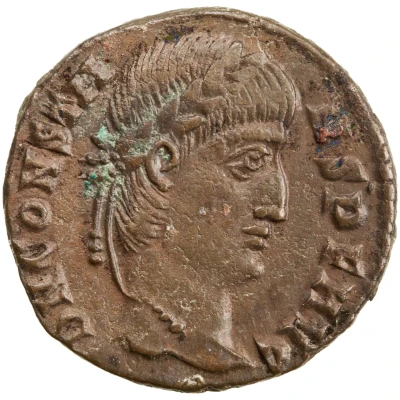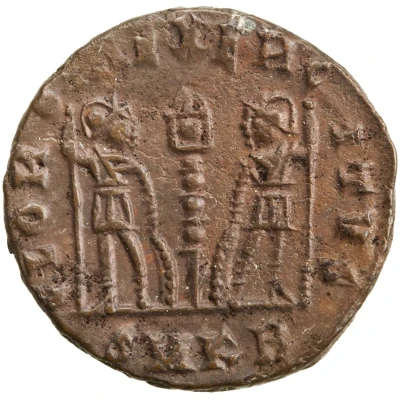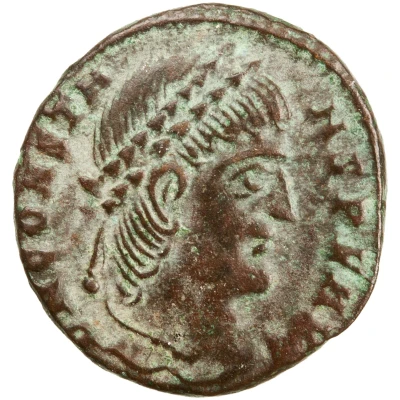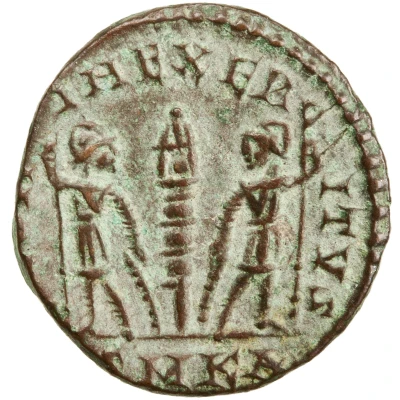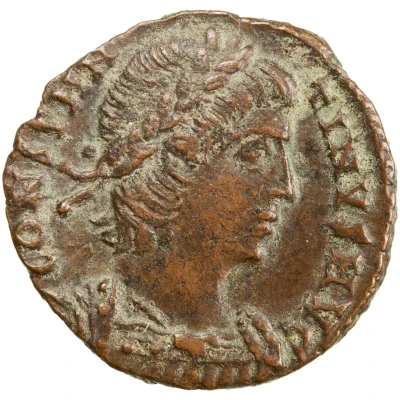
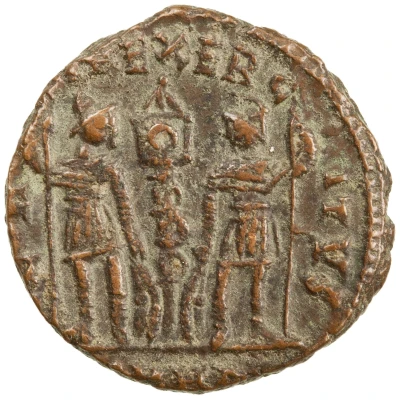

© American Numismatic Society (ANS)
Nummus - Constantinus II GLORIA EXERCITVS; Heraclea
| Bronze | 1.69 g | 15.42 mm |
| Issuer | Rome › Roman Empire (27 BC - 395 AD) |
|---|---|
| Emperor | Constantius II (337-361) |
| Type | Standard circulation coin |
| Years | 337-340 |
| Value | Nummus (1⁄7200) |
| Currency | Solidus, Reform of Constantine (AD 310/324 – 395) |
| Composition | Bronze |
| Weight | 1.69 g |
| Diameter | 15.42 mm |
| Shape | Round (irregular) |
| Technique | Hammered |
| Orientation | Variable alignment ↺ |
| Demonetized | Yes |
| Updated | 2024-10-04 |
| Numista | N#62332 |
|---|---|
| Rarity index | 80% |
Reverse
Two soldiers, helmeted, draped, cuirassed, facing front, heads toward each other, each holding inverted spear in outer hand and resting inner hand on shield; between them, a standard.
Mintmark and officina in exergue.
Script: Latin
Lettering: GLOR-IA EXERC-ITVS
Unabridged legend: Gloria Exercitus.
Translation: Glory of the Army.
Edge
Plain
Interesting fact
The Nummus - Constantinus II (GLORIA EXERCITVS; Heraclea) coin was part of a large-scale currency reform implemented by Emperor Constantine II in the early 4th century AD. The reform aimed to address the inflation and currency devaluation that had occurred under previous emperors, and the new coinage system introduced by Constantine II was designed to promote economic stability and prosperity throughout the Roman Empire. The Nummus coin, which features the image of Constantine II and the inscription "GLORIA EXERCITVS" (Glory of the Army), was one of the new coin denominations introduced during this reform, and it remained in circulation for several decades.
